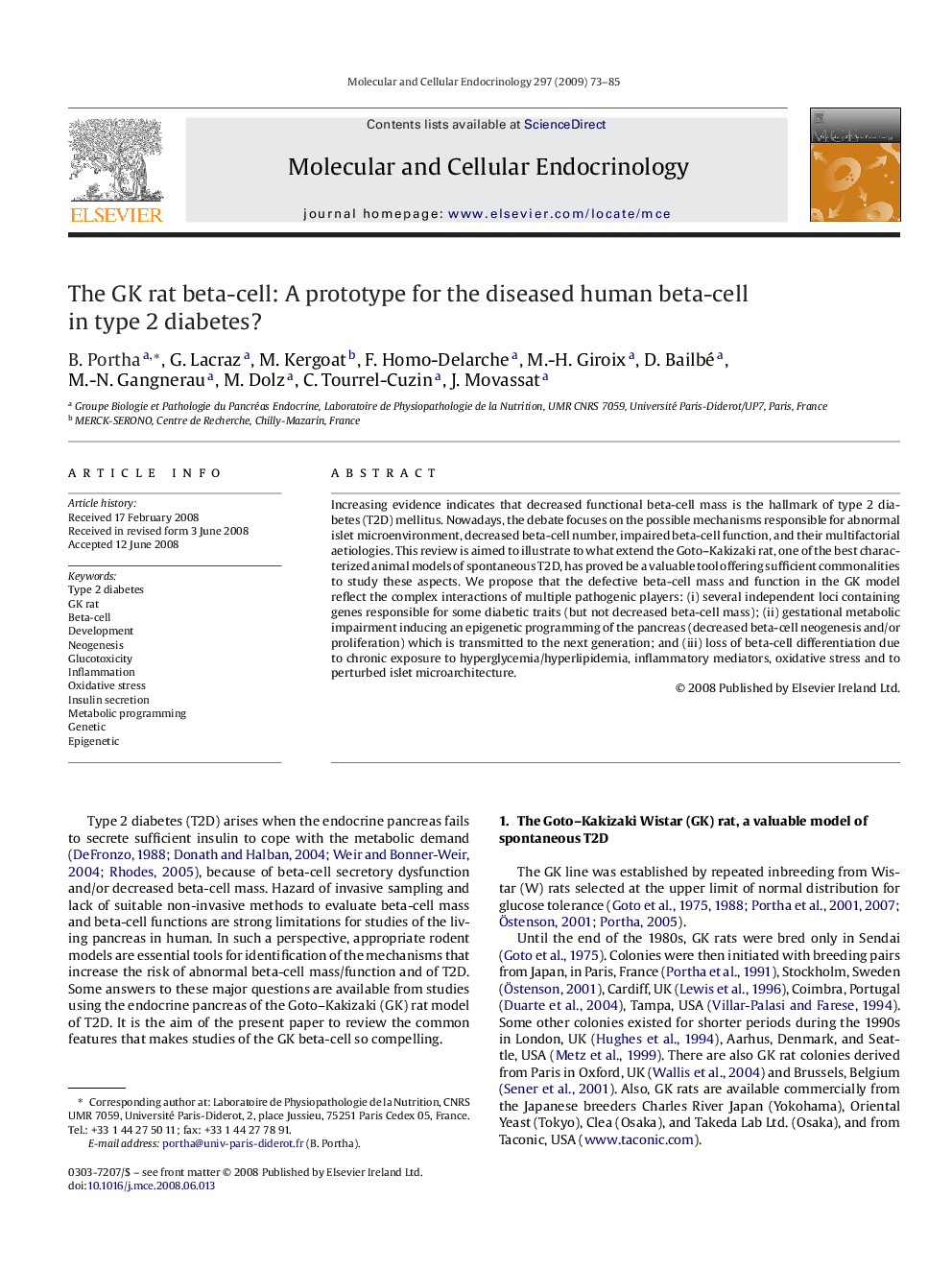| Article ID | Journal | Published Year | Pages | File Type |
|---|---|---|---|---|
| 2197427 | Molecular and Cellular Endocrinology | 2009 | 13 Pages |
Increasing evidence indicates that decreased functional beta-cell mass is the hallmark of type 2 diabetes (T2D) mellitus. Nowadays, the debate focuses on the possible mechanisms responsible for abnormal islet microenvironment, decreased beta-cell number, impaired beta-cell function, and their multifactorial aetiologies. This review is aimed to illustrate to what extend the Goto–Kakizaki rat, one of the best characterized animal models of spontaneous T2D, has proved be a valuable tool offering sufficient commonalities to study these aspects. We propose that the defective beta-cell mass and function in the GK model reflect the complex interactions of multiple pathogenic players: (i) several independent loci containing genes responsible for some diabetic traits (but not decreased beta-cell mass); (ii) gestational metabolic impairment inducing an epigenetic programming of the pancreas (decreased beta-cell neogenesis and/or proliferation) which is transmitted to the next generation; and (iii) loss of beta-cell differentiation due to chronic exposure to hyperglycemia/hyperlipidemia, inflammatory mediators, oxidative stress and to perturbed islet microarchitecture.
